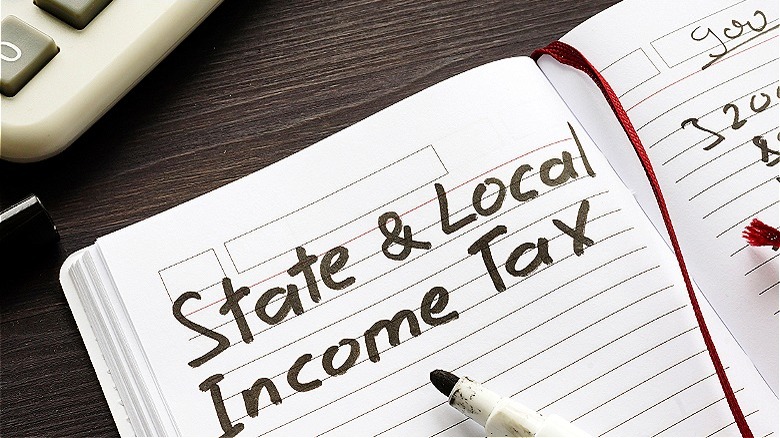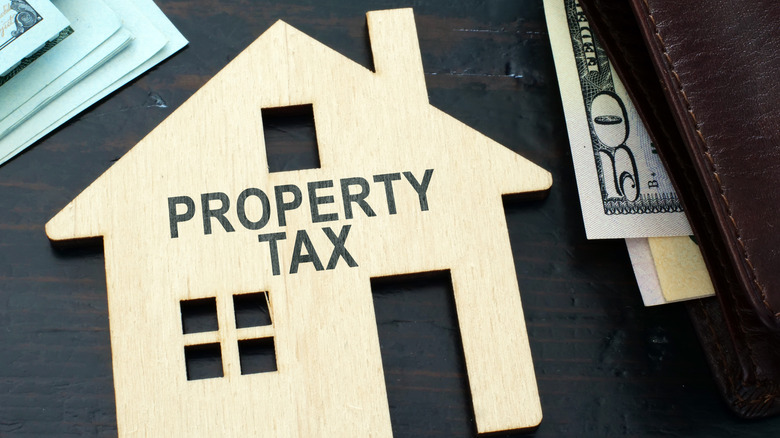Which State Has The Lowest Tax Burden?
In just a few weeks, Americans will begin filing their personal tax returns for the 2023 fiscal year. Depending on where they live in the United States, some taxpayers will have a significantly larger tax obligation than others. That's because individual states tax income at different rates, and some states don't tax income at all. Yet, state income tax rates aren't the sole determinant when considering which states have the highest and lowest tax burdens. One must also look at how states levy other taxes like sales tax and property tax to determine which states have the lowest overall tax burden.
So which state has the honor of the lowest tax burden? Well, let's just say that you'd better dress warm if you're planning to take advantage of the low taxes, because it's Alaska. If you're wondering what other states make the list of lowest overall tax burden, WalletHub reports the top five are:
-
Alaska (5.06%)
-
Delaware (6.12%)
-
New Hampshire (6.14%)
-
Tennessee (6.22%)
-
Florida (6.33%)
Note, the percentages in parenthesis represent the portion of an average person's income that goes toward taxes — excluding federal income taxes, of course.
What about just state income tax?
Since not everyone pays property taxes — at least not directly — and exposure to sales tax is highly dependent on an individual's purchasing habits, let's take a look at which locales are most desirable based purely on state income tax rates. To begin, there are nine states with no state income tax. They are Alaska, Florida, Nevada, New Hampshire, South Dakota, Tennessee, Texas, Washington, and Wyoming. Investors might note that while New Hampshire doesn't tax income from working, it does still tax dividends and interest. Similarly, Washington applies a long-term capital gains tax of 7% to profits from non-retirement investments equal to $250,000 or more, though job income isn't taxed.
The remaining 41 states tax income at rates ranging from 0.25% (the lowest bracket in Oklahoma) up to 13.3% (the highest bracket in California) for income earned during 2023 and reported in 2024. Also, it's worth noting that some states have income-based brackets similar to how federal income tax works, while others have a fixed rate regardless of income level.
Other tax liabilities to consider besides income tax
Homeowners already know that the leap in property values following the COVID-19 pandemic has been a double-edged sword. While on one hand, the record pace of real estate price gains has built a tremendous amount of equity for owners, it's also led to an increase in property taxes in many parts of the United States.
Some readers might assume renters are totally exempt from the grip of rising property taxes, but that's not entirely true. Unfortunately, renters pay property taxes indirectly as a hidden component of their monthly rent rates. For example, if property taxes increase by 20% year-over-year, tenants can bet that their rent will jump by a commensurate amount when lease-renewal time rolls around.
With that said, which states impact homeowners and/or landowners the least with property taxes? According to The Motley Fool, it's Hawaii, which has an effective property tax rate of just 0.29% — followed by Alabama (0.43%), Colorado (0.52%), and Nevada (0.55%). Compare that to the two highest states for property taxes, New Jersey and Illinois, at 2.29% and 2.46%, respectively.
Finally, state and local sales tax are two unwelcome additions to nearly everything that consumers purchase, from groceries to clothing to electronics. Lucky residents of five states don't pay any state sales tax at all, however; those states are Alaska, Delaware, Montana, New Hampshire, and Oregon. Regardless of how much, if any, states charge in sales tax, individual counties and cities frequently levy their own local sales tax in addition to the state-mandated sales tax.


